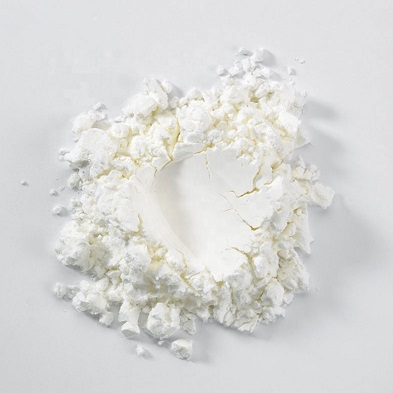| Identification | More | [Name]
Tylosin phosphate | [CAS]
1405-53-4 | [Synonyms]
2-[12-[5-(4,5-DIHYDROXY-4,6-DIMETHYL-OXAN-2-YL)OXY-4-DIMETHYLAMINO-3-HYDROXY-6-METHYL-OXAN-2-YL]OXY-2-ETHYL-14-HYDROXY-3-[(5-HYDROXY-3,4-DIMETHOXY-6-METHYL-OXAN-2-YL)OXYMETHYL]-5,9,13-TRIMETHYL-8,16-DIOXO-1-OXACYCLOHEXADECA-4,6-DIEN-11-YL]ACETALDEHYDE, PHOSPHORIC ACID
TYLAN
TYLOSIN PHOSPHATE
Tylosin, phosphate (salt)
TYLOSIN PHOSPHATE PREMIX 25%
TylosinPhosphate80%
Farmazin TB
2-[(4R,5S,6S,7R,9R,11E,13E,15R,16R)-6-[(2R,3R,4R,5S,6R)-5-[(2S,4R,5S,6S)-4,5-Dihydroxy-4,6-dimethyloxan-2-yl]oxy-4-dimethylamino-3-hydroxy-6-methyloxan-2-yl]oxy-16-ethyl-4-hydroxy-15-[[(2R,3R,4R,5R,6R)-5-hydroxy-3,4-dimethoxy-6-methyloxan-2-yl]oxymethyl]-5,9,13-trimethyl-2,10-dioxo-1-oxacyclohexadeca-11,13-dien-7-yl]acetaldehyde phosphate
Tyrosine [antibiotic]/phosphoric acid,(1:x)
Pharmasine TB
Tylan 10 premix
Tylan 40 premix | [EINECS(EC#)]
215-779-4 | [Molecular Formula]
C46H80NO21P | [MDL Number]
MFCD06795692 | [Molecular Weight]
1014.1 | [MOL File]
1405-53-4.mol |
| Safety Data | Back Directory | [WGK Germany ]
2 | [RTECS ]
YP0625000 | [Toxicity]
Tylosin base and its salts were shown to be of low acute oral toxicity with LD50 values in excess 5000 mg/kg bw in the rat and mouse and greater than 800 mg/kg bw in the dog. |
| Hazard Information | Back Directory | [Chemical Properties]
Tylosin phosphate (TS) is a light yellow to yellow liquid substance with a characteristic odor.

Tylosin phosphate has an antibacterial effect mainly on Gram-positive bacteria and partly on Gramnegative bacteria and mycoplasma, and has a growth-promoting effect on pigs.
| [History]
Tylosin phosphate is a macrolide antibiotic that was isolated and identified in 1959 by American scientists McGuire, Hamill, et al. from the fermentation broth of Streptomyces fradiae. As a secondary metabolite of this bacterium, it was subsequently produced industrially via fermentation by Eli Lilly and Company in Indiana, USA. The phosphate and tartrate salts of tylosin are currently the most commonly used forms in clinical practice. Although tylosin can also be produced by other bacterial strains, such as Streptomyces rimosus and Streptomyces hygroscopicus, Streptomyces fradiae remains the preferred strain for its industrial fermentation production. | [Uses]
Tylosin phosphate is a pure-grade antibiotic that was designated as a feed additive as of July 24, 1976. It is used for prevention and control of chronic respiratory disease (CRD) in replacement pullets, broilers, increasing bodyweight and improvement of feed conversion rate in broilers, increasing egg production. | [General Description]
Tylosin phosphate is an antibacterial agent employed against mycoplasma organisms. It is only used in veterinary field and effective basically against gram positive bacteria, but also has efficacy against some spirochetes and gram negatives (except coliforms). Tylosin phosphate, marketed as Tylan 40 or Tylan 100 Type A medicated article, is approved for use in beef cattle to reduce the incidence of liver abscesses caused by Fusobacterium necrophorum and Arcanobacterium (Actinomyces) pyogenes. | [Mechanism of action]
Tylosin phosphate is an antibiotic of macrolide group which is produced by fermentation of a certain fungus. This antibiotic prevents protein synthesis by ribosomes and thus prevents bacterial growth, resulting in their death. Special mechanism of action of macrolides, besides stopping rapid growth of microorganisms prevents buildup of bacterial resistance. | [in vivo]
Tylosin phosphate (10-500 mg/kg; s.c.) generally suppresses the elevated TNF-α and IL-1β levels and increases the IL-10 levels in the Lipopolysaccharide (LPS) -treated animals[4].
| Animal Model: | Balb/C mice (2-3 months old, 20-25 g)[4] | | Dosage: | 10 mg/kg, 100 mg/kg, 500 mg/kg | | Administration: | Subcutaneous injection | | Result: | Reduced the elevated TNF-α and IL-1β in LPS (250 μg)-treated mice but increased their IL-10 levels. |
| [IC 50]
Macrolide | [storage]
Store at -20°C | [structure and hydrogen bonding]
The parent ring of Tylosin phosphate's chemical structure is a 16-membered polyketide compound known as tylactone, to which three deoxysugar units are sequentially attached along its backbone. Among these, α-L-mycarose and β-D-mycaminose form a disaccharide attached at the C-5 position, while mycinose (deoxy-D-mycinose) is linked at the C-23 position. All three deoxysugar units are derived from glucose, and the methyl group attached to nitrogen originates from methionine. Tylosin C is structurally similar to Tylosin A. Tylosin D differs from Tylosin A in that the -CH₂CHO group at the C-6 position of the lactone ring is replaced by a -CH₂OH group. Tylosin contains two C-C double bonds at positions C-11 and C-13, along with a ketone group at position C-9, forming a conjugated system. As a result, it exhibits a maximum ultraviolet absorption peak at a wavelength of 290 nm.
 | [References]
[1] DIPESH DHAKAL Ramesh P P Jae Kyung Sohng. Engineering actinomycetes for biosynthesis of macrolactone polyketides.[J]. Microbial Cell Factories, 2019, 18 1: 137. DOI:10.1186/s12934-019-1184-z.
[2] S MCORIST. Oral administration of tylosin phosphate for treatment and prevention of proliferative enteropathy in pigs.[J]. American journal of veterinary research, 1997, 58 2: 136-139.
[3] MONIKA ENTORF . Tylosin susceptibility of staphylococci from bovine mastitis[J]. Veterinary microbiology, 2014, 171 3: Pages 368-373. DOI:10.1016/j.vetmic.2013.12.014.
[4] C M PILCHER J F P R Arentson. Impact of tylosin phosphate and distillers dried grains with solubles on energy and nutrient digestibility and flow through the gastrointestinal tract in growing pigs.[J]. Journal of animal science, 2013, 91 12: 5687-5695. DOI:10.2527/jas.2013-6746.
[5] FDA Clarifies Use of Tylosin Phosphate in Beef Cattle – Veterinarians | FDA |
|
|